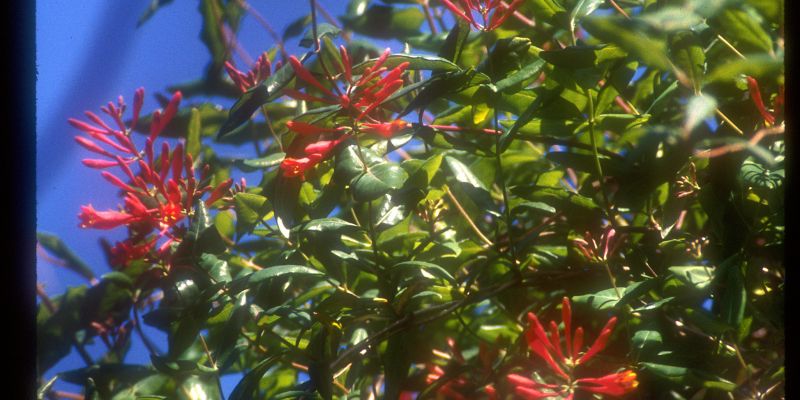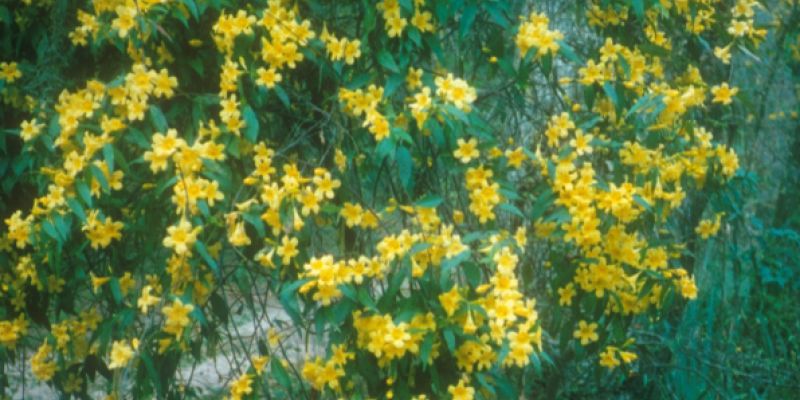Landscaping
Deer-resistant landscaping
Deer are a great challenge for the avid gardener. They often consume new plants that have been well fertilized and watered and are therefore tastier than their wild counterparts. Hungry deer will browse almost any plant but do not generally prefer grasses or ferns. Products like "Deer Stopper" can be used to effectively deter deer from consuming landscaping when an obvious browse line is noticed or there is evidence of deer nipping off the buds of blooming plants.
Callicarpa americana - beautyberry
Canna flaccida - golden canna
Chasmanthium latifolium - upland oats
Conoclinium coelestinum - mistflower
Dryopteris spp. - wood fern
Erythrina herbacea - coral bean
Gaillardia pulchella - blanket flower
Gelsemium sempervirens - yellow jessamine
Ilex glabra - inkberry
Ilex vomitoria - yaupon holly
Illicium floridanum - Florida anise
Iris virginica - blue flag iris
Lyonia lucida - fetter bush
Mitchella repens - partridge berry
Morella cerifera - wax myrtle
Muhlenbergia filipes - sweetgrass
Osmunda cinnamomea - cinnamon fern
Osmunda regalis - royal fern
Panicum virgatum - switch grass
Polystichum acrostichoides - christmas fern
Rudbeckia fulgida - black-eyed susan
Sabal minor - dwarf palmetto
Serenoa repens - saw palmetto
Verbena canadensis - verbena
Woodwardia areolata - netted chain fern
Yucca aloifolia - Spanish bayonet
Yucca filamentosa - bear grass
Groundcovers
Selecting appropriate groundcover plantings is an important part of the landscaping plan because they help to prevent undesired species from getting established. Groundcovers must grow quickly and be attractive in many seasons. They also should require little maintenance. Unfortunately, plants that meet these requirements tend to be aggressive and invasive.
Popular non-native groundcovers like English ivy (Hedera helix), large periwinkle (Vinca major) or Asiatic jasmine (Trachelospermum asiaticum) cover a lot of ground but can also overgrow other landscaping, natural areas, shrubs and trees. It requires a great deal of work to keep them under control. If you decide to use these species you should:
-
Inspect their boundaries regularly to make sure they don’t escape.
-
Keep a well-maintained border around the groundcover.
-
Keep the groundcover away from the drip line of ornamental shrubs. Many shrubs, such as camellias, azaleas and hydrangeas, have shallow roots that are forced to compete with these groundcovers for water and nutrients.
-
Keep groundcovers away from trees to prevent them from climbing.
-
Consider removing and replacing invasive groundcovers with attractive mulch or native groundcovers.
Native vines for the landscape
If you need a quick, attractive cover for a trellis, arbor or wall, consider using a native vine to add diversity and color.

Passion vine
Passion vine has very impressive flowers. The leaves are larval food for the Gulf fritillary, zebra heliconian and other caterpillars. The flowers are also visited by Gulf fritillary butterflies. The entire plant dies back to the ground each winter but re-emerges in spring so it never gets too large or out of control. It grows in sun or part shade.

Coral honeysuckle

Virginia creeper

Yellow jessamine

Trumpet creeper

American wisteria
Landscaping that benefits pollinators
Plants can be pollinated by many species of wildlife, including, birds, bats, moths, bees, butterflies, wasps and beetles. Native plants that attract these pollinators contribute greatly to a diverse habitat and support many species. Non-native landscaping plants are often bread to be showy but sterile, which means that while beautiful, these plants do not benefit any wildlife so the Trust highly encourages the use of native plants where possible.
NOTE: Some stores now sell nectar plants like lantana that have been raised from seeds treated with neonicotinoids, an insecticide that contaminates the entire plant and is harmful to pollinators. Read the fine print on labels before buying plants in order to avoid using these plants in your garden.
-
Beekeeping has become a popular pastime. The health and abundance of honeybees depends on a number of factors. Sources of nectar and nectar flow are critical to honeybee survival. The wax moth can destroy a hive in less than 10 days. Their larvae destroy both the honeycomb and the brood comb. Hives can also be lost to “Sudden Colony Collapse.”
Bees visit flowers more than 300,000 times to produce one pound of honey. Promote honey production and enhance your landscape by adding native plants that are attractive to honeybees. Be sure to protect these desirable species when you are pruning or maintaining your natural landscape areas.
-
The right habitat for adult butterflies includes flowers and plants used by the butterfly’s larvae. The use of the right native plants will match the habitat needs of butterflies that have historically inhabited this area.
-
Many of the same plant species that attract butterflies and bees also attract hummingbirds. As a general rule, however, hummingbirds are particularly attracted to red or orange tubular-shaped flowers.
Use of herbicides and insecticides in the yard
It is best to view the use of pesticides as a final resort to an intolerable pest problem. If used judiciously and applied appropriately at label-recommended rates, pesticides can be effective tools for control. The user must be sure to wear the proper protective equipment. Pesticide use is of particular concern when the homeowner hires a commercial company to spray regularly for weeds or mosquitoes. Since short-term customer satisfaction is the primary goal of the chemical applicator, there is more concern about over-reliance on pesticides.
Herbicides are a mixture of active ingredients and the solution in which the ingredients are dissolved. Generally, herbicides are safer to use than insecticides because the active ingredients in herbicides are molecules that interfere with chemical reactions that occur in plants but not animals.
In contrast, insecticides often target biochemical processes in animal nervous or respiratory systems, making their use a much greater concern. Read the label carefully before using any pesticide and follow the instructions. More is not better!
To learn more go to www.scpesticides.org. The pesticide application tool was developed by a partnership of the LowCountry Institute, National Oceanographic and Atmospheric Administration (NOAA), the University of South Carolina and Clemson Extension Service.

Graphic by Ellen Comeau, Clemson Extension

Copyright © Spring Island Trust
40 Mobley Oaks Ln. · Okatie, SC 29909 · 843-987-7008
Site by Sans Sheriff Studio
